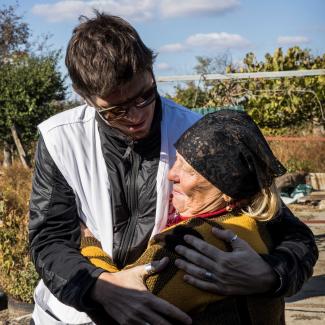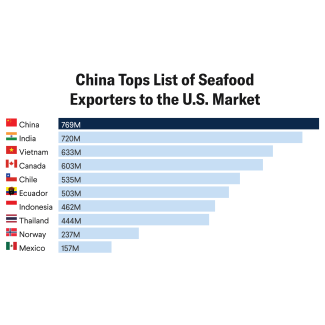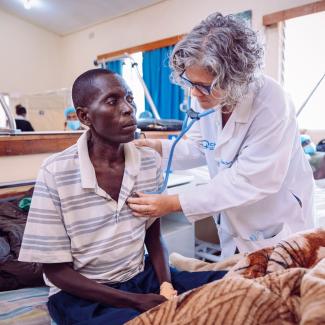Ongoing outbreaks of H5N1 avian influenza in the United States serve as a sobering reminder of the country's vulnerability to infectious disease threats. Nevada health officials recently reported the emergence of a new strain of bird flu in a dairy worker, and the virus has resulted in at least one human death in Louisiana. Meanwhile, infections continue to spread nationwide in poultry and cattle farms, and Arizona recently detected it in the state's milk supply.
Although the mutations necessary for a pandemic to take hold in humans remain rare and unpredictable, the current outbreak underscores systemic failures in the U.S. epidemic response. A resilient system requires predictable funding, cross-government collaboration, and transparency—so that we can effectively deal with H5N1 and be ready when the next outbreak emerges.
Bird flu has been circulating for decades, but with an escalating frequency of outbreaks in wild birds and poultry and emerging transmission in mammals, including humans, in recent years. The current outbreak began during the Joe Biden administration, which experts criticized for its failure to intervene quickly, allowing cases to spread unchecked. The Donald Trump administration's recent decisions to ban federal health agencies from external communications, end collaboration with the World Health Organization, and accidentally fire members of the avian influenza response severely undermine public health efforts, exacerbating mistrust and confusion. These shortcomings leave the United States woefully unprepared to address outbreaks—even of familiar pathogens—and the looming possibility of a new pandemic.
Systemic Challenges in U.S. Epidemic Response
The U.S. public health response has historically been burdened by its fragmented structure, with multiple agencies overseeing various aspects of controlling the spread: the Department of Agriculture manages livestock, the Department of the Interior oversees wildlife, and the Department of Health and Human Services is tasked with human health. Adding the Centers for Disease Control and Prevention (CDC), the Food and Drug Administration, and local health departments, coordinating a unified response becomes a colossal challenge.
During the early COVID-19 response, patchwork decision-making led to misaligned communication, procurement chaos, and inadequate testing capacity, leading to more than 1 million deaths in the United States and a $20 trillion global price tag. Today, these structural inefficiencies persist, complicating responses to H5N1 and other threats.
Epidemics are not just public health crises; they also threaten livelihoods. Reluctance to fully implement biosecurity measures due to financial losses creates delays in containment efforts, and rapid culls in poultry are causing egg prices to soar. The agricultural sector, which depends on a workforce that includes many undocumented workers, faces additional challenges. Concerns about immigration status make it harder for some workers to engage with health officials, creating barriers to effective disease mitigation efforts. The agriculture-public health disconnect weakens the country's ability to contain zoonotic diseases, such as H5N1, at their source.
Epidemics are not just public health crises; they also threaten livelihoods
The U.S. H5N1 response is unfolding against a backdrop of high influenza rates, ongoing COVID-19 transmission, and geopolitical shifts. Globally, dengue is surging. Cholera affected more than 30 countries last year, and measles has resurged in U.S. regions once declared free of the disease, including Texas and Georgia.
The public health sprint mentality—mobilizing rapidly to suppress an outbreak only to then return to business as usual—is no longer viable. The growing list of concurrent health threats demand a fundamental shift in how countries think, prepare, and respond to biosecurity challenges.
A Call for Bold, Coordinated Action to Protect Americans from H5N1
H5N1 is not a typical outbreak—it sits at the intersection of animal and human health, making coordination across sectors even more complex. The virus's ability to spread between species underscores the need for a whole-of-government approach that bridges human, animal, and environmental health systems. If the United States is to stay ahead of H5N1 and future threats, it needs to act decisively on three critical fronts.
1. Strengthen Coordination and Leadership Across Government
A fragmented response delays containment and increases risk. The White House Office of Pandemic Preparedness and Response Policy was created in 2023 to provide national coordination, and its new leader, Gerald Parker, is an expert on One Health, which recognizes the links connecting human, animal, and environmental health. His success will depend on breaking down silos and ensuring that agencies work together before a crisis escalates.
2. Implement Measurable, Time-Bound Readiness Goals
Preparedness requires clear benchmarks. The 7-1-7 target—which recommends detecting outbreaks within seven days, reporting within one, and responding within seven—identifies gaps in response systems and improves speed. This metric was included in the Biden administration's health security strategy, which the new administration is currently revising. Any new plan should incorporate accountability measures such as 7-1-7 to ensure early action and containment.
3. Rebuild Trust and Invest in Long-Term Preparedness
The United States has long been the gold standard in public health, and its CDC recognized globally as a leader. But even the strongest institutions can falter without sustained investment and public trust. Public health officials need the freedom to share accurate, timely information and must engage in honest dialogue across agencies and with the American public. Trust is a bedrock of effective public health and a prerequisite for the capabilities that have made the United States a global health security leader.
Public health and politics should work together to restore trust, ensure cohesion across agencies, and commit to long-term investments that protect against future threats. That means breaking the cycle of panic and neglect, where funding surges in a crisis only to be cut once the danger fades.




